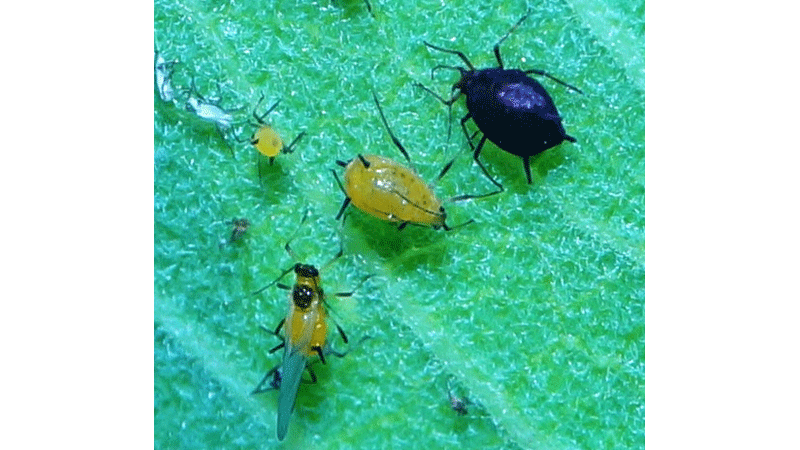Aphids on milkweeds
Published 9:08 pm Saturday, September 17, 2022

- This photo presents three stages of aphids on milkweed. (Photo submitted by John Bunch)
|
Getting your Trinity Audio player ready...
|
By John Bunch
Virginia Master Naturalist
Anyone who has grown milkweeds in order to help out the ailing monarch butterflies will probably be familiar with the oleander aphids. You may not have known their name, but I bet you’ve seen them on the milkweeds. They seem to be ubiquitous on most of the plants at some stage of the plant’s growth.
These insects definitely make the plants unsightly, as there can be a great deal of them, but they should really be left alone because they are an important part of the milkweed community. It happens to be that these insects aren’t native, probably having come in with oleander plants from the Mediterranean area. As oleanders and milkweeds are related, the aphids take to the milkweeds. So why should we leave them alone? It turns out that these insects form a large food source to many predacious insects, and we certainly do want those around. By the aphids attracting beneficial insect predators, this will help our garden as well. Think ladybugs. We all know they prey on aphids, and we welcome those beetles into our yard.
The aphids are quite colorful, a bright orangey yellow with jet black legs, and are really quite striking. And curiously, these aphids are parthenogenic, meaning they reproduce asexually. You see, out in the wild, there exists no male oleander aphids, only females, and they bear their young live.
As these insects are so prolific, their numbers can increase seemingly exponentially to the point of becoming densely packed. This will cause a bodily change to happen in some of them in that they’ll sprout wings. Now they can fly off to colonize new plants.
Now here’s where it gets real interesting, and maybe creepy to some. As small as these aphids are, there are certain types of wasps that aren’t much larger that will arrive and pay those aphids a visit. The females of those wasps will lay a single egg inside an aphid and move on to another aphid, repeating that process. That egg will develop into a larvae that will devour the aphid from the inside and once mature, will open a hole in the back and fly out as an adult wasp. The aphids so infected in this manner turn a bronze coppery color and then black and are known as “Aphid Mummies”.
So if you have milkweeds with these aphids, you might take notice to see if any have become aphid mummies.





